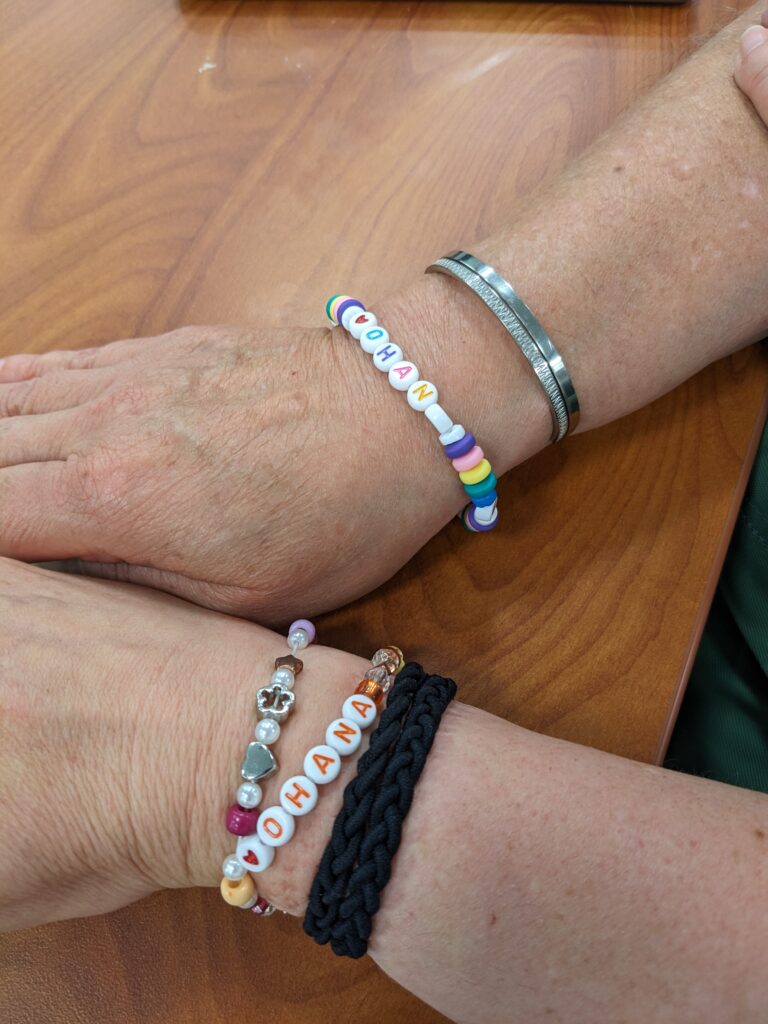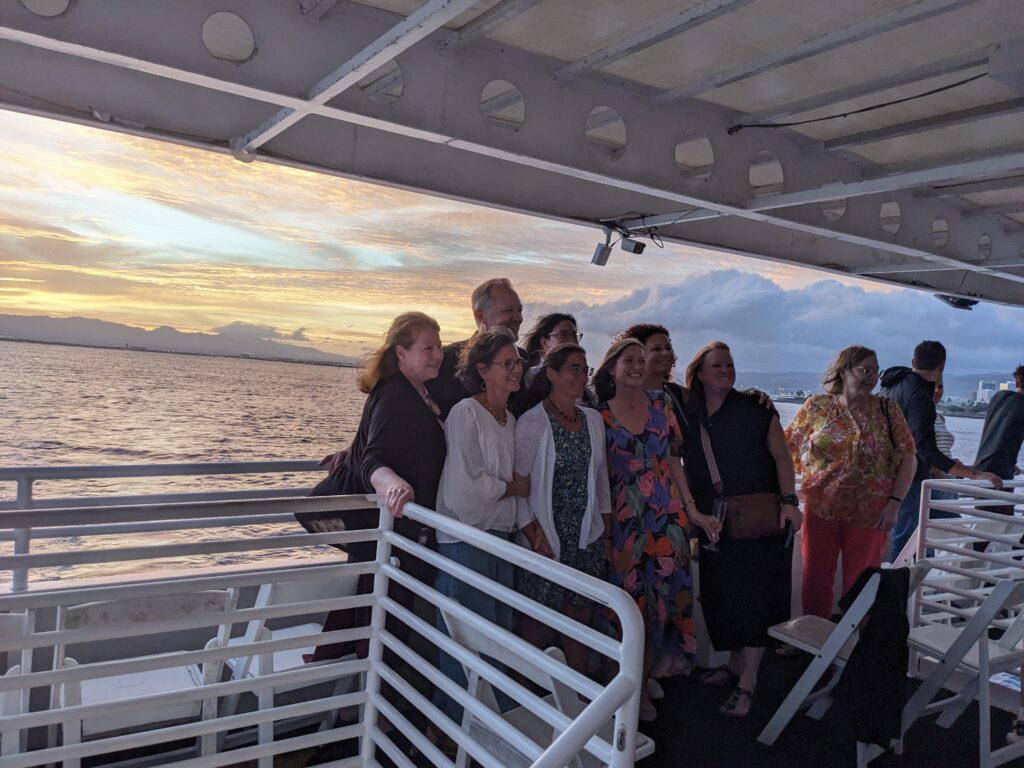
2025 FLEAT 8 Conference Report
By Samanta Buffa, Ayesha Swinton, Amanda Romjue, Shannon Donnally Quinn, and Jeffrey Samuels
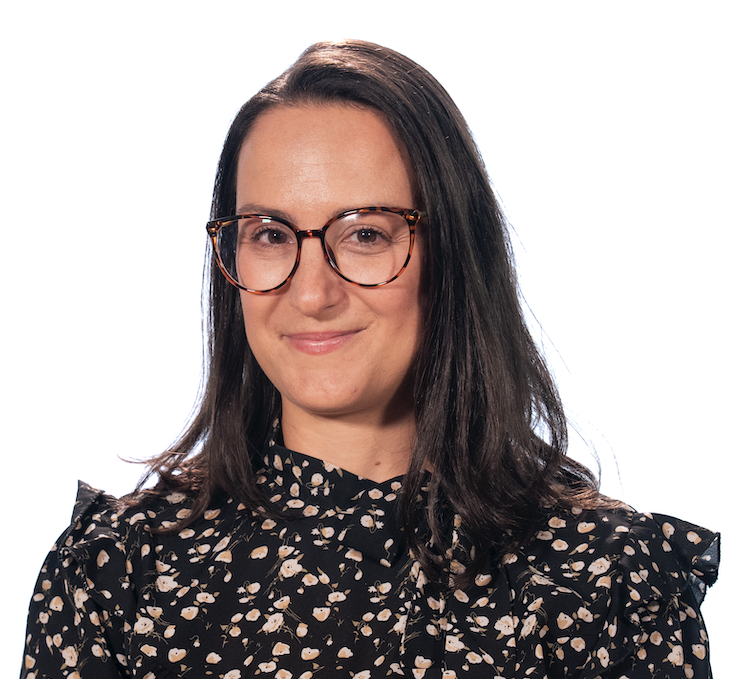
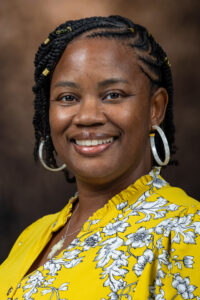
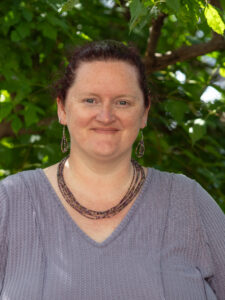


DOI: https://www.doi.org/10.69732/ZIQR7297
The International Association of Language Learning Technology (IALLT), the Japanese Association for Language Education and Technology (LET), and the Center for Language and Technology (CLT) at The University of Hawaiʻi at Mānoa organized the eighth Foreign Language Education and Technology (FLEAT 8) Conference. It took place June 25-28, 2025, at The University of Hawai‘i at Mānoa.
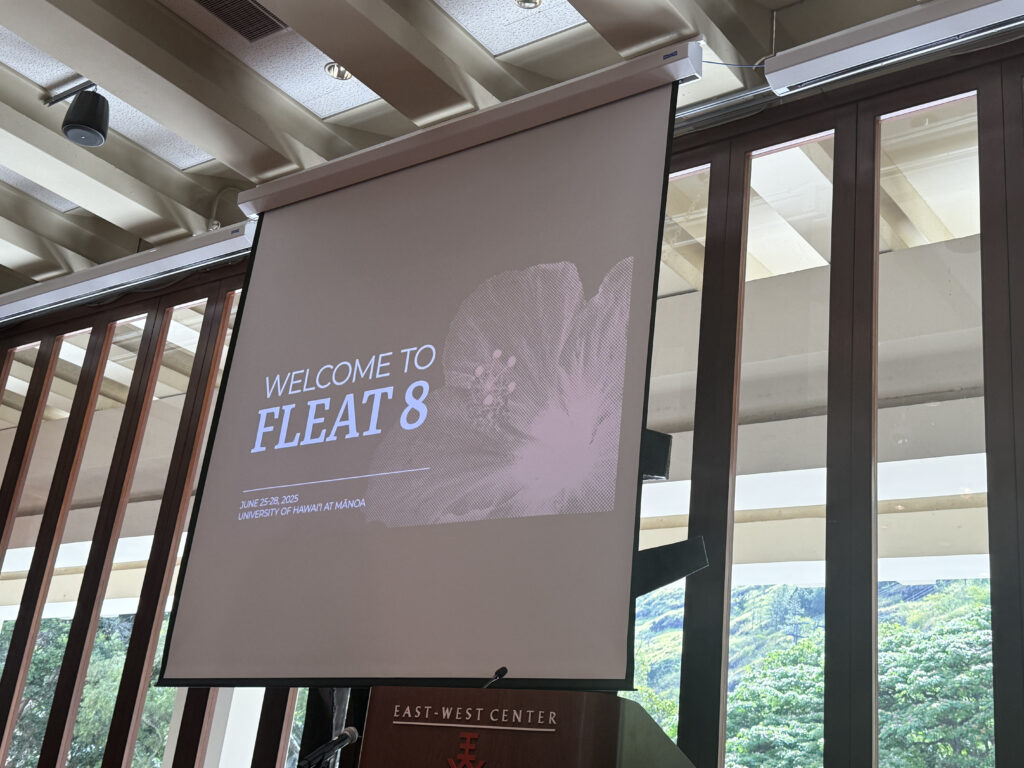
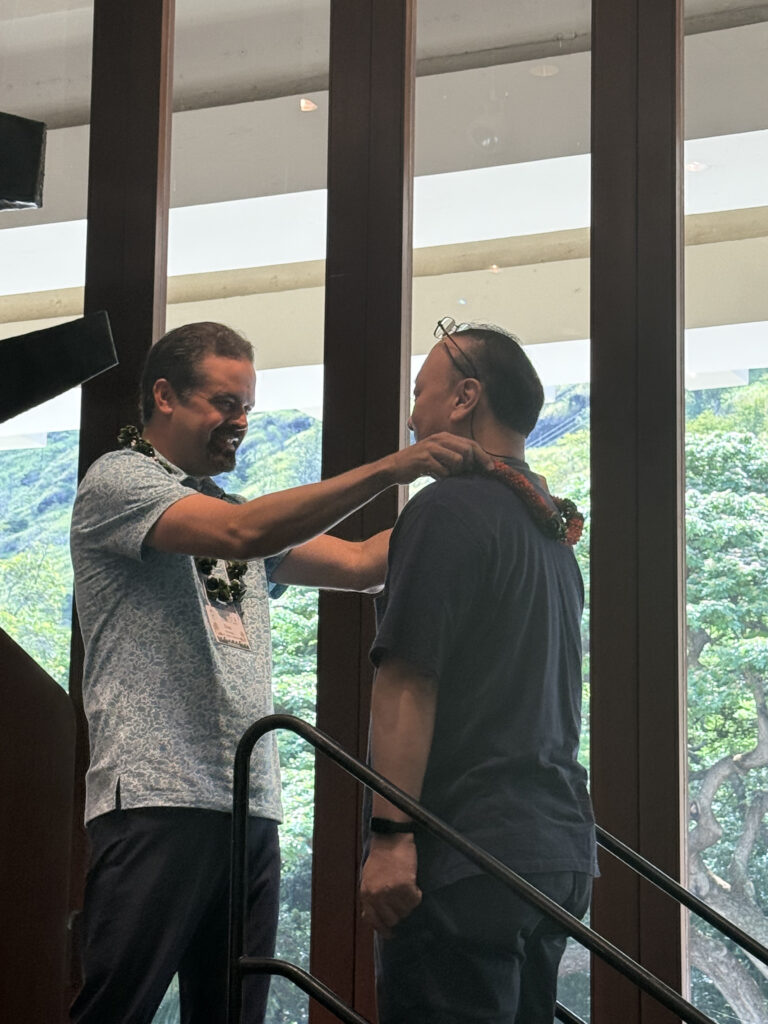
Workshops
The conference opened with a full day of workshops designed to support instructors in integrating technology into their language classrooms. One highlight of the morning was a session led by Dr. Alfonso Santiago, instructional designer at the University of Michigan, who demonstrated how artificial intelligence can be used to create educational games without requiring any coding skills. Dr. Santiago showcased examples of online games developed with ChatGPT and guided participants through the process of designing their own. Attendees explored AI tools to create language-learning games, brainstormed innovative concepts, and even beta-tested their prototypes. The results were creative and inspiring, sparking enthusiasm to further develop their ideas beyond the session.
In the afternoon, Dr. Yuka Doui, a licensed Japanese high school teacher, shared game-based activities from her high school ESL classroom, including tools such as Padlet, Kahoot, and an imaginative Super Mario-themed PowerPoint game designed to review course material in a playful and engaging way.
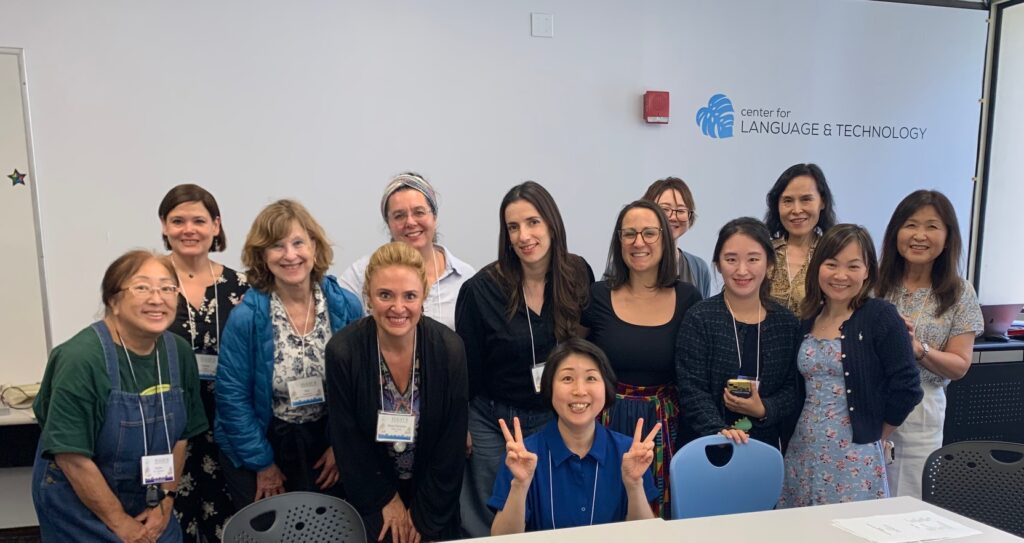
Other informative workshops included one about LibreTexts’ ADAPT Platform by Cristina Moon and Sarah Harmon, and a session about managing the ever-evolving Language Resource Center by David Shultz and Christopher Cirefice. On Saturday, events held at the conclusion of FLEAT 8 included a workshop on differentiating instruction and assessment by Tavane Moore and a language center forum moderated by Angelika Kraemer and Catherine Baumann.
FLEAT Welcome Reception
The first day concluded with the 8th FLEAT Welcome Reception at the Ala Moana Hotel, where participants enjoyed traditional Hawaiian cuisine and were treated to a performance of Hula Kahiko—an ancient dance accompanied by pahu drums and chants (oli). The music and movement narrated the creation of the islands and honored the rich cultural traditions of Hawaiʻi.
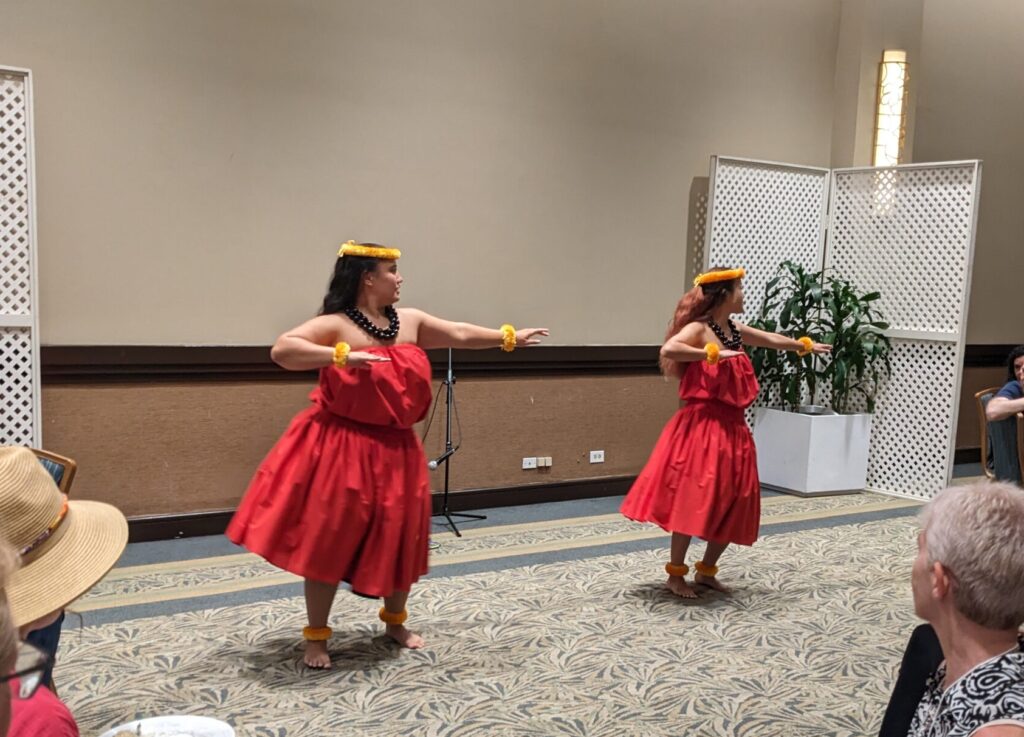
Henderson Plenary – Not Your (Grand-) Father’s Language Lab: Intercultural Reset
Carol Goss, the Director of the Language and Intercultural Learning Center (LINC) at Valparaiso University, presented this conference’s Henderson Plenary session, “Not Your (Grand-) Father’s Language Lab: Intercultural Reset” in which she described her journey of rethinking the purposes and benefits of the language center. In the fifties, language labs consisted of students practicing language individually using the audio lingual method. Seventy five years later, the approach is learner centered, social and employs a variety of language acquisition methods. Goss added to the idea of how variation leads to innovation by noting how it connects to extension. Goss discussed the two year time frame of her language center’s remake, starting in 2020 when her language center closed. In 2022, she connected with the University of Notre Dame’s Center for the Study of Languages and Cultures, shifting her focus to becoming an Intercultural Development Inventory (IDI) administrator. Drawing upon innovation to thrive and survive, Goss leveraged remaining support branches that traditionally support student language learners to reimagine the role of her center on her campus. She tapped into programs such as tutoring, student-led language groups and other programs, as well as gatherings to support the new Language and Intercultural Learning Center (LINC) at Valparaiso University. Goss ended the presentation by sharing success markers and metrics, discussing the adjustments she made based on feedback, and giving advice on extending outward.

Keynote – Language Learning in the Age of AI
The keynote speaker, Dr. Michele Anciaux Aoki, gave a presentation entitled “Language Learning in the Age of AI” in which she advocated for an approach for language learning called Facilitated Interdependent Language Learning (FILL). This approach allows for a learning space where there is one facilitator but potentially many different languages that can be explored. This model is learner-led and -chosen. Learners set goals and work toward them. The facilitator helps learners to find resources and motivates them to continue working toward the learners’ own goals. This creates personalized learning pathways in which students set their own outcomes and develop lifelong learning habits. Intercultural competence is embedded along the way. This model offers a learning experience in which there is space for more learners and more languages. Teachers keep a formative focus and foster community building. It can make any language more accessible to learners. She shared the following Resource document for interested participants to follow up on the ideas that she shared. She also invites questions via her email address, michele@anciauxinternational.com.
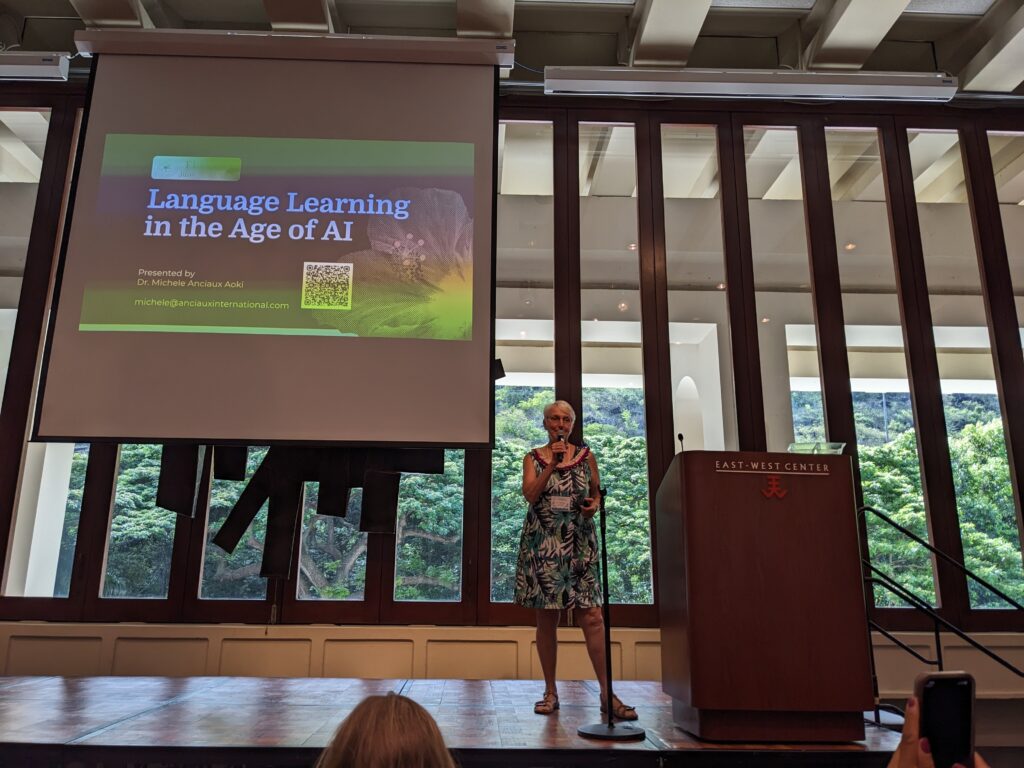
Sessions

This year’s conference featured many sessions and meetings on a variety of topics, including language centers, Virtual Reality (VR), Open Educational Resources (OER), and Artificial Intelligence (AI). There were also sessions about getting involved with IALLT and its various attributes such as The FLTMAG.
Language Centers
Many sessions focused on topics related to language centers, including how language centers can lead the way with AI, and a session about the Language Center Handbook 2025, which can be purchased now from Lulu.com. Other language center topics included how to establish a language center, transforming the language lab to a language center, language center design, the language center as an agent for social justice, building community with centralized social media, and a language center forum.
One example of an excellent language center session was Abigail Haile’s Saturday session on fostering student engagement. It highlighted how her language center has incorporated student-staff mentorship projects. The projects serve to retain the presence of valuable student voices by developing their professional skills and providing students opportunities to showcase their heritages.

Virtual Reality
Virtual Reality was a hot topic at this year’s 8th FLEAT conference. Many of the presenters provided examples of the integration of VR in the language classrooms, using 360°-videos, immersive platforms like ImmerseMe, or environments created from scratch using Unity.
The first example is from César Hoyos Álvarez, Juan Godoy-Peñas, María Jesús Barros García, and Nuria López-Ortega from the University of Cincinnati who discussed lesson plans and 360° videos recorded in Spain. The study was conducted among Spanish language learners of various proficiency levels. Using VR headsets, the instructors focused on students’ awareness, motivation, and engagement. Students learned cultural aspects such as Dia de los Muertos, local recycling practices, regional methods for cultivating and producing products, a buleria show, and a tabanco (a traditional local tavern with tapas and impromptu Flamenco). The group shared the primary intervention, as well as pre- and post-activities. They plan to continue video footage selection and editing, further develop linguistic and cultural aspects into thematic units, implement pilot lessons in the classroom, and collect users’ feedback.
Betty Rose Facer and Denis Uebiyev presented their mixed-methods study, conducted with more than 300 undergraduate students at Old Dominion University who used the VR platform ImmerseMe to complete activities in their target languages (French, Italian, Chinese, German, or Spanish). At the start of the semester, the researchers trained language instructors in the use of the platform and invited them to evaluate the available videos according to course level. Instructors then selected an array of activities from which students could choose, and asked them to respond to reflection prompts afterward. Overall, students reported finding ImmerseMe helpful, particularly appreciating its grammar support features, cultural content, and engaging scenarios. However, some encountered technical difficulties or described certain videos as unengaging. Sentiment analysis—initially generated by AI and subsequently reviewed by the researchers—assessed students’ emotional responses and indicated an overall positive reception.
Professor Kevin Richards and Samanta Buffa from the Ohio State University walked attendees through the key steps involved in designing virtual environments (VEs) from the ground up. Drawing on a study conducted in Fall 2024 in a beginner-level Italian language course, they showcased how a virtual reality escape room can promote student engagement and interaction. In the first part of their session, they outlined the pedagogical design process—including identifying a learning need and grounding the activity in an Instructed Second Language Acquisition (ISLA) theoretical framework, selecting a grammar focus and task type, and creating a prototype. In the second part, they demonstrated practical strategies, tools, and resources for both novice and experienced users to build interactive tasks using Unity and the Meta Quest Development Kit. They concluded by addressing potential challenges (such as budget and time limitations, technical malfunctions, cybersickness, and the need for IT support), highlighting positive outcomes (including increased motivation, enhanced problem-solving skills, and rich post-task discussions), and sharing best practices—like allocating extra time, offering non-immersive options, and regularly checking in on students’ well-being.
IALLT Alumni Reunion
Many old friends were able to reunite at IALLT, including many of our retired members. In the traditional “Old Coots” session, both older and newer IALLT members connected to friends and colleagues in the room and via Zoom.
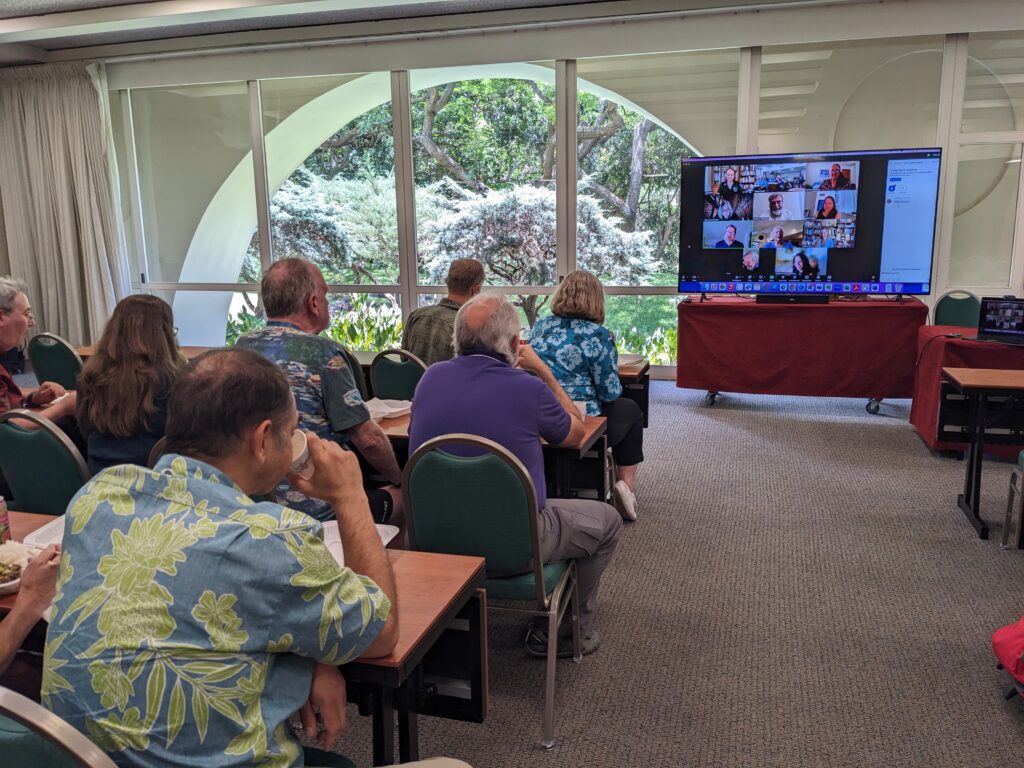
IALLT Awards
Several people were given well-deserved awards at FLEAT 8. Join us in congratulating these people on their awards!
| Ruth Trometer Lifetime Achievement Award | Ron Balko |
| President’s Award | Stacey Powell |
| Robert Henderson Memorial Award | Joseph Borkowski
Denis Uebiyev |
| Robert Henderson Plenary Award | Carol Goss |
| Marie Sheppard Award | Russell Hugo |
| Harold H. Hendricks Award for Sustained Leadership in IALLT | Betty Rose Facer |
| K-12 Educator Conference Grant | Yuka Doui
Sonia Rocca James Yoder |
| Best Contribution to The FLTMAG by a Graduate Student | Blair Richards |
| Best Contribution to The FLTMAG by a K-12 Teacher | Daniel Verdugo |
| Ursula Williams Graduate Student Conference Grants | Samanta Buffa
Xi Chen Petra Juna Jennings Yoonmin Kim |

On the last day of the conference, the business meeting took place, including the Talking Stick Ceremony and the passing of the gavel to the new president. Lauren Rosen began her term as IALLT President and she will serve for two years until the next conference in Madison, Wisconsin in 2027.

FLEAT 8 Closing Events: Cruise and Escape Rooms!
The conference ended on a high note with two unforgettable events. The closing dinner took place aboard a ship that sailed at sundown, offering stunning views of Honolulu bathed in golden light. As night fell, fireworks lit up the sky, casting a dazzling glow over the island and adding a magical touch to the evening. The final activity brought participants together for a series of escape rooms, where small teams collaborated to solve puzzles in themed settings. It was a lively, laughter-filled experience that strengthened connections and celebrated teamwork. The night concluded with wings, appetizers, and heartfelt goodbyes as everyone gathered one last time to reflect on a truly memorable week.

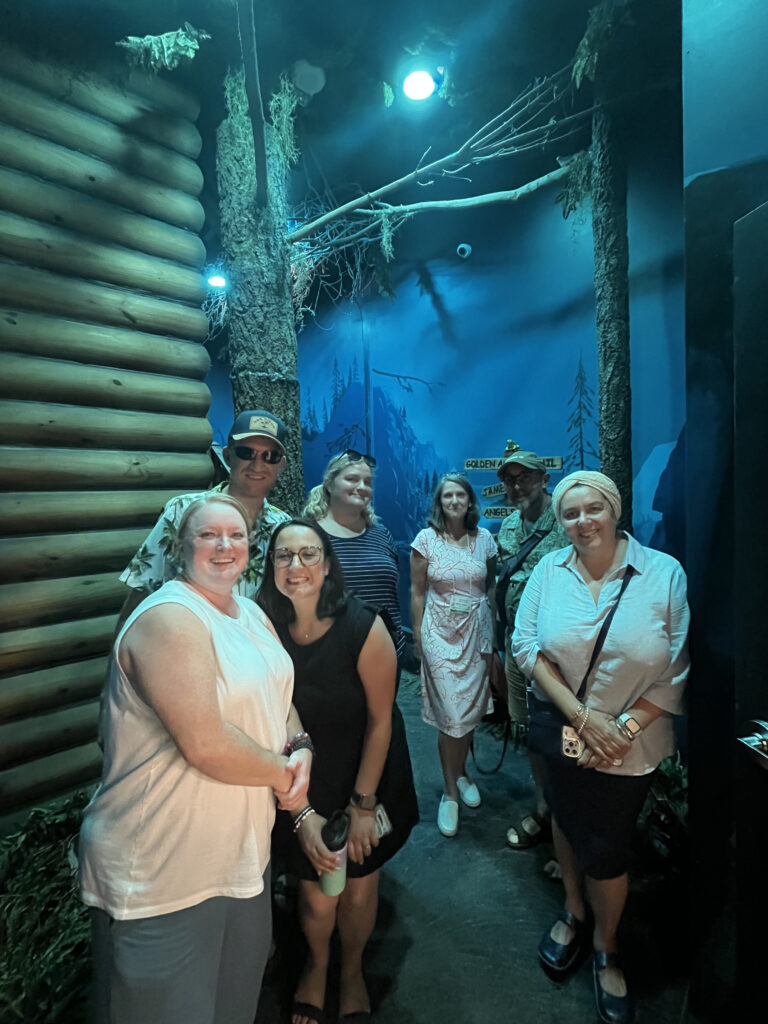

ʻOhana
We conclude our report with our gratitude. There would be no conference without our generous sponsors and exhibitors. A special thanks goes out to Avant Assessment, OWL Testing Software, Immerse, Eigo.ai, Vista Higher Learning, Synchronous Online Flipped Learning Approach (SOFLA), the NFLRC, the Center for Language & Technology, and SEALLT for their contributions and participation.
Special thanks also go to Stacey Powell, Styx Jenkins, Amanda Romjue, Molly Godwin-Jones, and the whole IALLT Board, for planning a fun and meaningful event. It is truly thanks to them that we experienced the feeling of ʻOhana – the Hawaiian term for family. We truly look forward to seeing our IALLT family in person in 2027. See you in Madison, Wisconsin June 16-19, 2027!
